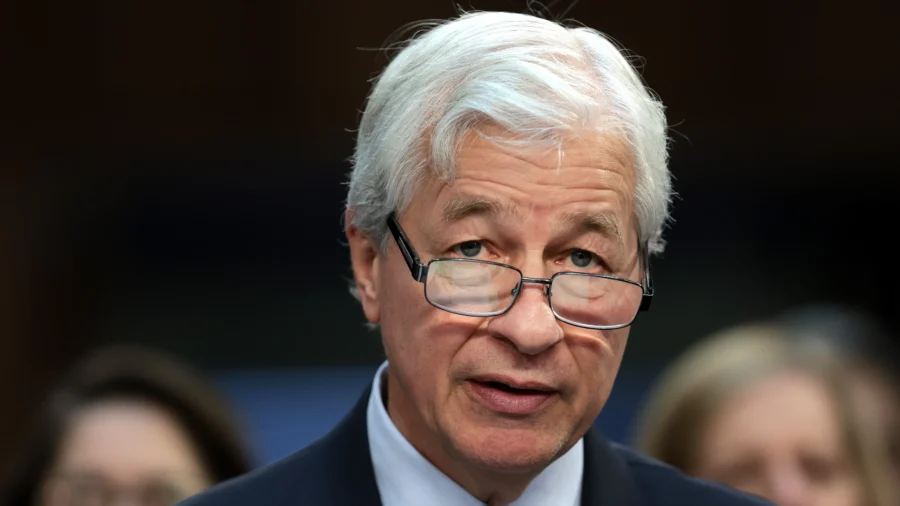JPMorgan Chase CEO Jamie Dimon said this week that a fate worse than recession for the U.S. economy—namely, stagflation—can’t be ruled out.
Speaking at the Council of Institutional Investors’ fall conference in New York City on Sept. 10, Dimon expressed concern about the possibility that stagflation—a detrimental mix of economic stagnation and inflation—could well be stalking the U.S. economy.
“The worst outcome is stagflation—recession, higher inflation,” Dimon said. “And, by the way, I wouldn’t take it off the table.”
Stagflation, a term often associated with the 1970s, is marked by elevated price pressures, increasing unemployment, and stagnating economic growth. Such a combination could push stock markets lower, strain retirement accounts, and reduce consumer purchasing power. It could also lead to prolonged economic hardship, making it difficult for policymakers to revive growth without making inflation worse.
Meanwhile, investors and economists are focusing on signs of slowing growth and possible cracks in the labor market as Federal Reserve officials have been battling high inflation for more than two years with high interest rates, which have raised borrowing costs and cooled demand. While inflation has fallen from its June 2022 peak of 9 percent to 2.6 percent in August 2024, there are fears that inflationary pressures could pick back up—along with expectations that inflation will settle around the 3 percent mark over the long term.
The latest University of Michigan consumer sentiment survey, which included questions about near- and long-term inflation expectations, found that American consumers expect inflation over the next 12 months to come in at 2.7 percent. While that’s a slight decline from the prior month and closer to the Fed’s 2 percent target, the same survey showed that Americans’ long-run inflation expectations—that is, over a five-year horizon—rose to 3.1 percent in September, after holding steady at 3 percent for five months. The rise in the five-year ahead inflation expectations number suggests that inflationary concerns persist despite recent improvements.
Dimon echoed these sentiments in his remarks at the conference, noting that higher government deficits and continued infrastructure spending could reignite the inflationary fire.
“So it’s hard to look at [it] and say, ‘Well, no, we’re out of the woods.’ I don’t think so,” he said.
Besides Dimon, there’s a chorus of economists saying that the fight to tame inflation is not over.
For instance, economists at Euro Pacific Capital Management said in a recent note that three sectors stand out as red flags for a possible resurgence of inflation: medical care, shelter costs, and transportation services.
“We’ve consistently highlighted the persistent undercurrents of inflationary pressures, and the recent data does little to dispel these concerns,” the economists wrote, referring to the latest data on the Consumer Price Index (CPI), which showed that headline inflation fell to 2.5 percent in annual terms, while core CPI, which strips out food and energy and is seen as a measure of underlying inflationary pressures, jumped by 0.3 percent month over month, above expectations.
Investors predict the Fed will cut interest rates at its next policy meeting on Sept. 18, a move that would reduce borrowing costs and take some pressure off the economy, but it would also add to inflationary pressures.
Federal Reserve Chair Jerome Powell said in a speech at Jackson Hole last month that he believes the Fed has made a “good deal of progress” on the inflationary front, and that the task is not yet complete.
Powell said that the Fed’s objective in the current interest rate-hiking cycle has been to avoid sharp increases in unemployment that marked earlier disinflationary episodes. He said evidence of cooling in the labor market is “unmistakable” and signaled that rate cuts are coming.
“The time has come for policy to adjust,” he said. “The direction of travel is clear, and the timing and pace of rate cuts will depend on incoming data, the evolving outlook, and the balance of risks.”
From The Epoch Times

